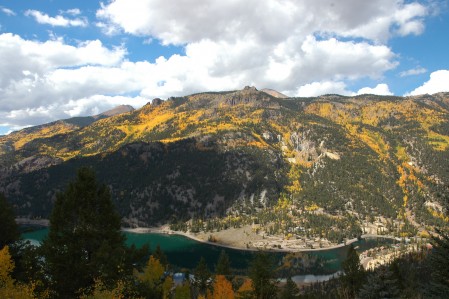PATENTED MINING CLAIM:
A patented mining claim is one for which the Federal Government has passed its title to the claimant, making it private land. A person may mine and remove minerals from a mining claim without a mineral patent. However, a mineral patent gives the owner exclusive title to the locatable minerals. It also gives the owner title to the surface and other resources. This means: You own the Land as well as the minerals. (Hall Realty Mining Claim Listings are all Patented Mining Claims.)
UNPATENTED MINING CLAIM:
An Unpatented mining claim is a particular parcel of Federal land, valuable for a specific mineral deposit or deposits. It is a parcel for which an individual has asserted a right of possession. The right is restricted to the extraction and development of a mineral deposit. The rights granted by a mining claim are valid against a challenge by the United States and other claimants only after the discovery of a valuable mineral deposit. This means: You are leasing, from the governmnet, the right to extract minerals. No land ownership is conveyed.
TWO TYPES OF MINING CLAIMS:
- LODE CLAIMS: Deposits subject to lode claims include classic veins or lodes having well defined boundaries. They also include other rock in-place bearing valuable minerals and may be broad zones of mineralized rock. Examples include quartz or other veins bearing gold or other metallic minerals and large volume but low-grade disseminated metallic deposits. Lode claims are usually described as parallelograms with the longer side lines parallel to the vein or lode. Descriptions are by metes and bounds surveys (giving length and direction of each boundary line). Federal statute limits their size to a maximum of 1,500 feet in length along the vein or lode. Their width is a maximum of 600 feet, 300 feet on either side of the centerline of the vein or lode. The end lines of the lode claim must be parallel to qualify for underground extralateral rights. Extralateral rights involve the rights to minerals that extend at depth beyond the vertical boundaries of the claim.
- PLACER CLAIMS: Mineral deposits subject to placer claims include all those deposits not subject to lode claims. Originally, these included only deposits of unconsolidated materials, such as sand and gravel, containing free gold or other minerals. By Congressional acts and judicial interpretations, many nonmetallic bedded or layered deposits, such as gypsum and high calcium limestone, are also considered placer deposits. Placer claims, where practicable, are located by legal subdivision of land (for example: the E 1/2 NE 1/3 NE 1/4, Section 2, Township 10 South, Range 21 East, Mount Diablo Meridian). The maximum size of a placer claim is 20 acres per locator.
TWO TYPES OF MINERAL ENTRIES:
- MILL SITES: A mill site must be located on nonmineral land. Its purpose is to either (a) support a lode or placer mining claim operation or (b) support itself independent of any particular claim. A mill site must include the erection of a mill or reduction works and/or may include other uses reasonable incident to the support of a mining operation. Descriptions of mill sites are by metes and bounds surveys or legal subdivision. The maximum size of a mill site is 5 acres.
- TUNNEL SITES: A tunnel site is where a tunnel is run to develop a vein or lode. It may also be used for the discovery of unknown veins or lodes. To stake a tunnel site, two stakes are placed up to 3,000 feet apart on the line of the proposed tunnel. Recordation is the same as a lode claim. Some States require additional centerline stakes (for example, in Nevada, centerline stakes must be placed at 300-foot intervals). An individual may locate lode claims to cover any or all blind (not known to exist) veins or lodes intersected by the tunnel. The maximum distance these lode claims may exist is 1,500 feet on either side of the centerline of the tunnel. This, in essence, gives the mining claimant the right to prospect an area 3,000 feet wide and 3,000 feet long. Any mining claim located for a blind lode discovered while driving a tunnel relates back in time to the date of the location of the tunnel site.
The above Mining Claim information is from http://www.1881.com Investments.




